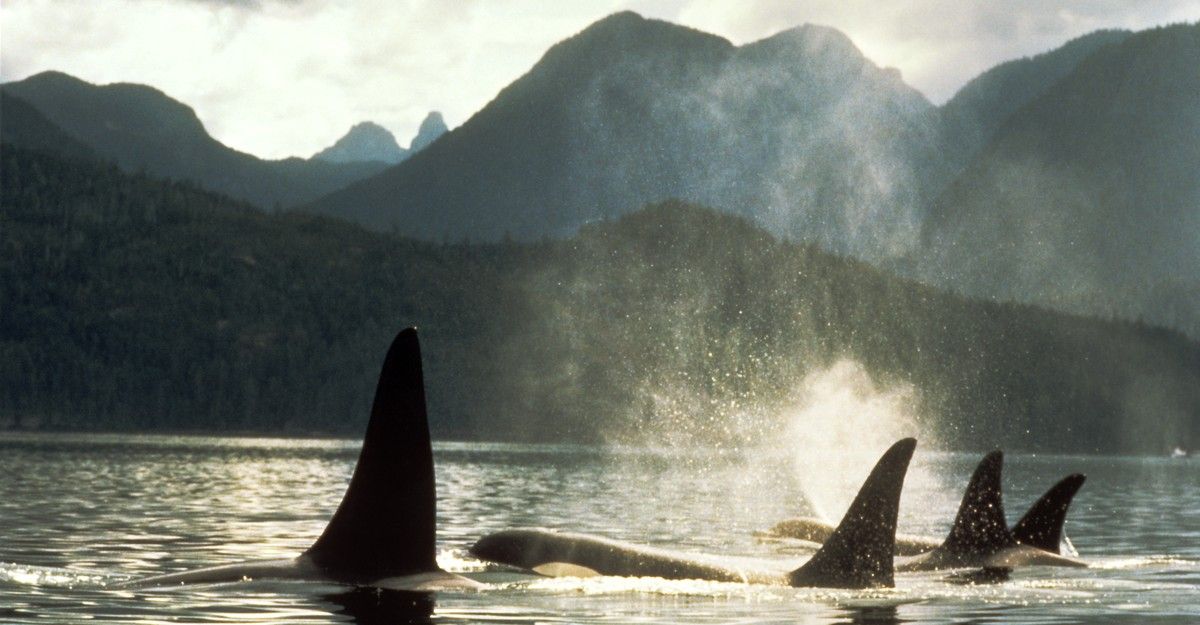Killer Whales Are Not Our Friends
In recent months, orcas in the waters off the Iberian Peninsula have taken to ramming boats. The animals have already sunk three this year and damaged several more. After one of the latest incidents, in which a catamaran lost both of its rudders, the boat’s captain suggested that the assailants have grown stealthier and more efficient: “Looks like they knew exactly what they are doing,” he said. Scientists have documented hundreds of orca-boat incidents off the Spanish-Portuguese coast since 2020, but news coverage of these attacks is blowing up right now, thanks in part to a creative new theory about why they’re happening: cetacean vengeance. Now that’s a story!
“The orcas are doing this on purpose,” Alfredo López Fernandez, a biologist at the University of Aveiro in Portugal, told LiveScience last month. “Of course, we don’t know the origin or the motivation, but defensive behavior based on trauma, as the origin of all this, gains more strength for us every day.” López Fernandez, who co-authored a 2022 paper on human-orca interactions in the Strait of Gibraltar, speculates that a specific female, known to scientists as White Gladis, may have suffered a “critical moment of agony” at the hands of humans, attacked a boat in retaliation, and then taught other whales to do the same.
Whatever the truth of this assertion, White Gladis and her kin have quickly ascended to folk-heroic status on the internet. “What the marine biologists are framing as revenge based on one traumatic experience may be a piece of a larger mobilization towards balance,” the poet Alexis Pauline Gumbs tweeted before referring to the killer whales as “revolutionary mother teachers.” Media figures and academics are expressing solidarity with their “orca comrades” and support for “orca saboteurs.” One widely circulating graphic shows a pod smashing a boat from below, above the words “JOIN THE ORCA UPRISING.” (You can even purchase it in sparkly sticker form.) Yet all of this fandom and projection tends to overlook important facts: First, these orcas are likely to be playing with the boats rather than attacking them, and second, if one insists on judging killer whales in human terms, it’s plain to see they aren’t heroes but sadistic jerks.
The recent incidents, none of which has resulted in any injuries to humans, are simply the result of curiosity, Monika Wieland Shields, the co-director of the Orca Behavior Institute in Washington, told me. A juvenile may have started interacting in this way with boats, she said, and then its habit spread through the local community of killer whales. Such cultural trends have been observed before: In the Pacific Northwest, orcas have been playing with buoys and crab pots for years; in the late 1980s, one group of orcas there famously took to wearing salmon hats. Is ramming boats the new donning fish? Shields believes that theory makes more sense than López Fernandez’s appeal to orca trauma. White Gladis shows no physical evidence of injury or trauma, Shields told me, so any “critical moment of agony” is purely speculative. Also, humans have given orcas ample reason to retaliate for hundreds of years. We’ve invaded their waters, kidnapped their young, and murdered them in droves. And yet, there is not a single documented instance of orcas killing humans in the wild. Why would they react only now?
Read: 7 reasons killer whales are evil geniuses
And though recent events may fit the story of these orcas’ being anti-colonial warriors, you can’t just anthropomorphize animals selectively. What about all the other “evidence” we have of orcas’ cruelty, or even wickedness? Scientists say they hunt and slaughter sharks by the dozen, picking out the liver from each one and leaving the rest of the carcasses to rot uneaten. Orcas kill for sport. They push, drag, and spin around live prey, including sea turtles, seabirds, and sea lions. Some go so far as to risk beaching themselves in order to snag a baby seal—not to consume, but simply to torture it to death. Once you start applying human ethical standards to apex predators, things turn dark fast.
Perhaps #orcauprising was inevitable. Humanity does have, after all, a long history of freighting cetaceans with higher meaning. Moby Dick is, among other things, a symbol of the sublime. The biblical whale—or is it a large fish?—that swallows Jonah is an instrument of divine retribution, a means of punishing the wicked in much the same way some have framed the boat-wrecking orcas. The whale 52 Blue, known as the loneliest whale in the world because she speaks in a frequency inaudible, or at least incomprehensible, to her brethren, has become a canvas for all shades of human sorrow and angst.
Orcas in particular have long been objects of both fear and sympathy, in some cases with an explicitly anti-capitalist tint. The 1993 classic Free Willy centers on a conniving park owner’s scheme to profit off of the bond between a child and a young killer whale. And more recently, the 2013 documentary Blackfish chronicles SeaWorld’s real-life exploitation of captive orcas. The “orca uprising” narrative fits neatly into this lineage. In our present era of environmental catastrophe, Shields told me, it’s appealing to think that nature might fight back, that the villains get their just deserts.
But projection and anthropomorphization are only shortcuts to a shallow sympathy. Orcas really are capable of intense grief; they are also capable of tormenting seal pups as a hobby. They are intelligent, emotionally complex creatures. But they are not us.
Source: The Atlantic


